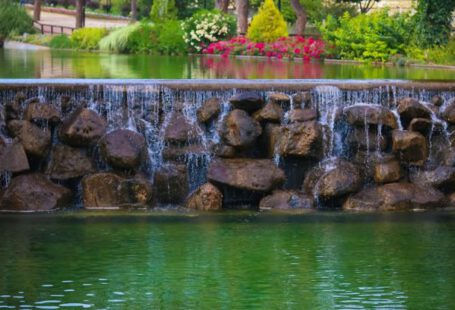Mosquitoes are a common nuisance in many backyard ponds, causing not only itchy bites but also potential health risks due to their ability to transmit diseases. Controlling mosquito breeding in backyard ponds is crucial to ensure a pleasant outdoor experience and protect your family from mosquito-borne illnesses. By implementing some simple strategies and maintenance practices, you can effectively reduce mosquito populations in your pond and enjoy a mosquito-free environment.
Understanding the Mosquito Breeding Cycle
To effectively control mosquito breeding in your backyard pond, it is essential to understand the mosquito breeding cycle. Mosquitoes lay their eggs in standing water, and these eggs hatch into larvae within a few days. The larvae then develop into pupae before emerging as adult mosquitoes. By targeting the different stages of the mosquito life cycle, you can disrupt their breeding process and reduce their numbers significantly.
Remove Standing Water
The first step in controlling mosquito breeding in your backyard pond is to eliminate any standing water where mosquitoes can lay their eggs. Check your pond regularly for areas of stagnant water, such as puddles, leaf debris, or waterlogged soil, and remove them promptly. Mosquitoes can lay their eggs in even small amounts of standing water, so be thorough in your inspection and removal efforts.
Install a Water Feature
Installing a water feature, such as a fountain or waterfall, in your backyard pond can help disrupt the still water that mosquitoes prefer for breeding. The movement of the water will make it less attractive for mosquitoes to lay their eggs, reducing the chances of larvae developing in your pond. Additionally, the sound of running water can create a soothing ambiance in your outdoor space.
Introduce Mosquito-Eating Fish
Another effective way to control mosquito breeding in backyard ponds is to introduce mosquito-eating fish, such as goldfish, koi, or guppies. These fish feed on mosquito larvae, helping to keep their population in check. Make sure to choose fish species that are suitable for your pond size and climate, and provide them with proper care to ensure they thrive and continue to control mosquito larvae effectively.
Use Biological Control Methods
Biological control methods, such as using mosquito dunks or larvicide treatments, can be an effective way to target mosquito larvae in your backyard pond. Mosquito dunks contain a naturally occurring bacterium that specifically targets mosquito larvae, while larvicide treatments are designed to kill mosquito larvae without harming other aquatic life. Follow the instructions carefully when using these products to ensure safe and effective mosquito control.
Maintain Your Pond Regularly
Regular maintenance of your backyard pond is essential for controlling mosquito breeding. Keep your pond clean by removing debris, algae, and fallen leaves that can provide breeding sites for mosquitoes. Trim back vegetation around the pond to reduce shady areas where mosquitoes can hide and rest. By maintaining a clean and well-balanced pond ecosystem, you can minimize mosquito breeding opportunities and create a healthy environment for aquatic life.
Conclusion: Enjoy a Mosquito-Free Backyard Pond
By implementing these strategies and maintenance practices, you can effectively control mosquito breeding in your backyard pond and create a pleasant outdoor environment for you and your family to enjoy. With a combination of preventive measures, biological control methods, and regular maintenance, you can reduce mosquito populations in your pond and minimize the risk of mosquito-borne illnesses. Take proactive steps to keep your backyard pond mosquito-free and make the most of your outdoor living space.





